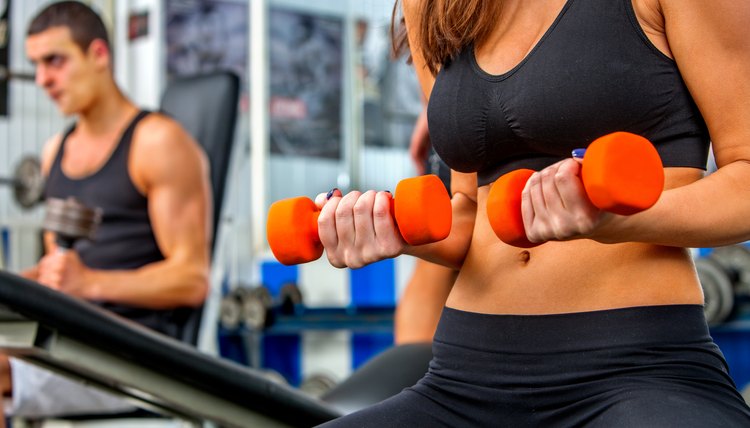Can Fats Be Turned Into Glycogen for Muscle?

Your body utilizes a variety of compounds for energy, including fats, carbohydrates and proteins. Because your muscles sometimes need extra energy during strenuous workouts, they have small stores of glycogen, an substance rich in energy. Fat can be converted into glycogen, but the process requires many steps.
What Is Glycogen?
Glycogen is essentially glucose molecules that are connected together, causing it to be similar to starch. One of the main differences is in the way that the glucose is connected together; glycogen stores glucose in many branches, whereas starch is a long line of glucose molecules. Glycogen stores excess glucose in the liver and in the muscles for use when energy needs are high or for when blood glucose levels are low.
Fat and Gluconeogenesis
Although fat molecules, also known as lipids, cannot be converted into glycogen, they can be turned into glucose. The process of making glucose molecules from non-carbohydrate sources is called gluconeogenesis. Fats can be broken down to form a molecule known as glycerol; through a series of chemical reactions, glycerol can be converted into glucose molecules. Gluconeogenesis primarily occurs in the liver, though it can also be done by cells in the small intestines and kidneys.
Glycogen Synthesis
Glycogen is also made by the liver and is typically made when blood glucose levels are very high. Glycogen is synthesizes by chemically linking together multiple glucose molecules. When you have an excess of glucose in the body, the amount of glucose in the liver rises, which triggers glycogen synthesis. Glycogen can be stored in the liver but small amounts are also transported to skeletal muscle to boost their energy reserves.
Considerations
Although fat can be converted into glycogen, the conditions under which fat is turned into glucose and glucose is converted into glycogen are different. Gluconeogenesis occurs more frequently when blood glucose levels are low, whereas the synthesis of glycogen molecules occurs when blood glucose levels are high. Thus, while it is theoretically possible that the body can turn parts of fat molecules into glycogen, this is unlikely to happen to a significant extent.
References
Writer Bio
Adam Cloe has been published in various scientific journals, including the "Journal of Biochemistry." He is currently a pathology resident at the University of Chicago. Cloe holds a Bachelor of Arts in biochemistry from Boston University, a M.D. from the University of Chicago and a Ph.D. in pathology from the University of Chicago.
